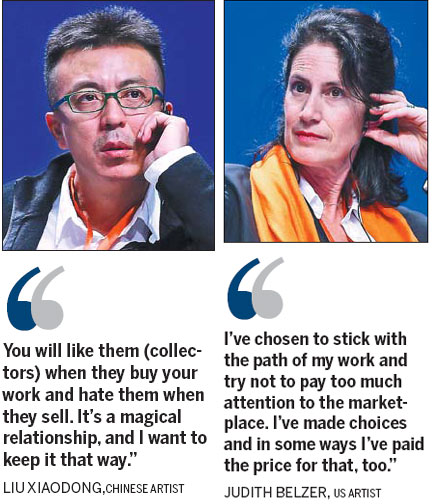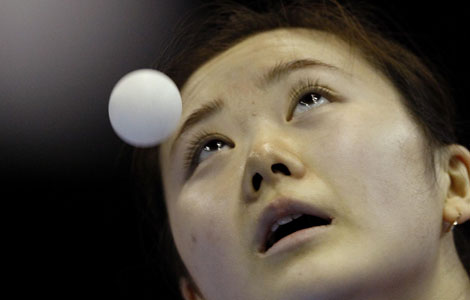The cost of commercialization
Updated: 2011-11-22 11:21
By Todd Balazovic (China Daily)
|
|||||||||

While the art industry was once filled with "starving" artists whose dedication to their craft left them scraping a living, well-known artists can now afford decadent lifestyles.
The struggle to find a balance between creativity and marketing was framed at a panel discussion on Friday, bringing together artistic minds from both sides of the Pacific Ocean, as part of the US-China Forum on the Arts and Culture.
"I've been protesting that we have to talk about the marketplace," says artist Eric Fischl, who made his name during the upturn in the US art market during the 1980s.
Fischl is clearly uncomfortable when described by Asia Society forum moderator Melissa Chiu as a "poster-boy" for the 1980s generation of artists that helped make the contemporary art industry big business.
In the 1980s people used to call it the "art world", Fischl says.
"Now we call it the art market. To me that represents the most dramatic shift," he says.
The art scene during the early '80s, Fischl says, was one where even the most famous artists had to have second jobs to support themselves and money had little to do with success.
His Chinese counterpart, Liu Xiaodong, one of China's wealthiest artists - whose Three Gorges sold for 22 million yuan ($3.46 million) in 2007 - says it is difficult to understand China's art boom.
"I myself was confused. You have so much money coming in, how should you react to it?" he says.
Liu is one of several contemporary artists who have sculpted China's thriving art world in the last decade. He says the booming marketplace is a positive development and spurs the creativity of artists.
His colleague, Xu Bing, who's known for such large installation pieces as Book of the Sky, agrees with Liu, saying it's not the money that matters; it's how artists respond.
"We cannot avoid this reality, but what matters is how artists react," Xu says.
Selling artworks, regardless of the cost, allows artists to spread their ideas, he says.
One artist who deliberately avoids over-commercialization is Judith Belzer, who says she believes this preserves her artistic spirit.
 |
"I've chosen to stick with the path of my work and try not to pay too much attention to the marketplace," she says. "I've made choices and in some ways I've paid the price for that, too."
By avoiding the buy-and-sell attitude of gallery owners and auctioneers, Belzer says her work has developed more slowly in the marketplace than other artists.
The panel had a variety of views when it came to dealing with collectors. Liu jokingly advised to keep them as "invisible" as possible.
"You will like them when they buy your work and hate them when they sell," he says. "It's a magical relationship, and I want to keep it that way."
Belzer adds that she once accepted a dinner invitation from a collector only to be shown one of her cherished works hanging sideways over a mantel.
A stunned Belzer was told by the collector, "I bought it, and this is the way I like it."










